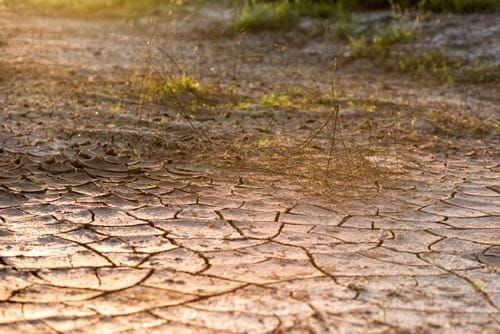Reinvigorating Vision

What can erosion teach us about tending to our inner garden?
September 2017
Erosion is directly linked to the malleability of the soil.
Nature's gusts and storms seek to reinvigorate a hardened landscape.
This is the time of year for harvest festivals and a preparation for the dying away of the landscape. Ancient cultures may have observed this period as a time of New Year because all that was visible is stripped away. They may have believed that an opening occurred to sweep up the dead into a type of rebirth and may be why so many cultures honor the deceased during autumn. Perhaps they believed there was an opening that allowed us to communicate with those who have passed.
Disruption in nature is actually a movement toward abundant growth. Storms and forest fires are simply evening out the environment for new growth. We might build our homes on a landscape we believe is unchanging and misjudge the effects of nature's movement toward abundance. What can be feared in nature? It is just so. The Taoist masters observed how wonderous life was and came to respect death as something mysterious, but not to be feared. Whatever created life has also created death so it must be just another part of life's mystery, perhaps even more wonderous. Tranquility in disturbance is the highest expression of a true Sage.
If we could capture a snapshot of fear, it might have come with our first breath when we left the comfort of the womb. No matter what life had in store for us, nature will ensure that we are given every opportunity to remain healthy and it cultivates our success. Each time we meet an unfamiliar situation, we might return to our breath. Whatever this place is - it seems to have our best interests at heart.
An outlook of fear perpetuates itself. The more we resist confronting its irrational nature, the more power it holds over us. Avoiding anything gives it power. Rather than let go, we accumulate the unproductive energy of anxiety. Like the dead limbs that undermine the productivity of the tree, pruning and releasing the outworn is an important aspect of wellness.
Since nature shows itself to be heavily focused on release and renewal, you will be given many opportunities to explore why you choose to hold onto anything. Sometimes you need to take a breath and just let go.
If your inner landscape hardens, any new experience that might nourish abundance is rejected because of your fear of loss. Operating defensively makes for a non porous type of inner soil.
Your soil in here and your experiences out there can be observed like an ecosystem. In nature, a petrified landscape of barren soil perpetuates the severe storms that lead to erosion. An ecosystem with high-intensity rainfall, more winds and storms experiences greater erosion specifically to stabilize the soil. Once the landscape becomes permeable, where water can percolate into the ground rather than wash over it, new growth emerges. The weather patterns are then softened by the abundant foliage of the landscape.
Imagine your thoughts as your inner landscape participating with experience much like an ecosystem. Difficult experiences may have hardened you, but the gusts and storms will inevitably soften a hardened mindset. The storms out there reflect the famine in here. If your foundation is based on a fear of letting go, chances are it is an ecosystem with severe weather patterns.
Erosion, like the inability to be permeable to experience, offers a lesson about how the world in here is tied to what you experience out there. It can inspire you to understand the need for a more porous mindset. The events that you ward off are specifically occurring to help you open, release and flower.
Nothing in nature remains stagnant, and you may think that avoiding your fear is keeping it at bay. You dream specifically to explore your fears in a safe environment, where dreaming releases psychic pressure and the unproductive energy of worry.
Nature’s drive toward permeability through erosion might inspire you to plant your inner garden with a more open and receiving type of soil. Rather than avoid your fear, plant it as a tree and nurture it through understanding. Allow it to grow strong roots so that nothing can threaten your sense of peace. Experience is meant to help you grow long roots that will stabilize your inner garden.
The biggest leaps made in nature are accomplished by a species willing to try something new. Many must take that fearful leap in order to fly, swim or do whatever nature intended them to do. Whatever you fear, see it as a sign of the road that you might explore. Only by overcoming your fear can you learn to fly.
When you untangle the knots and soften the glare
you discover how life is a reflection of your inner world.
Exercise:
Care for a potted plant as if you are tending your inner garden. Notice the consistency of the soil and how water must percolate to its roots. Observe the balance between too much water and too little water. Notice how either condition can wilt its leaves. Notice the leaves extended like tiny solar panels that receive the sunlight. Observe what happens to any plant that is denied light. Open your arms, heart and mind in the plant’s receiving posture. Embrace the vicissitudes of life that fall like rain to nourish your soil. If you transform your ecosystem into one that fulfills itself with light and abundance, you need not fear the storms that come to open you to abundant growth. Thunderstorms and rainbows are born of the same rattling sounds and promises.
